Towed practices of skating
Par alfathor |
Publié le 11 January 2013 |
Mis à jour le 3 November 2020 |
Catégories :
Hybrid practices
Hybrids
Towed-Roller-Skating
All
| Sous-catégories :
History of roller-skating
History of roller-skating
| 22004
| Tags :
roller joering
kite roller
Towed practices
towed skating
kite skating
Have you ever thought about using another mean that your own strength to propel yourself while skating? Most of skaters did. With a kite, a dog, a horse, a bicycle or anything else, there are plenty of fun solutions…
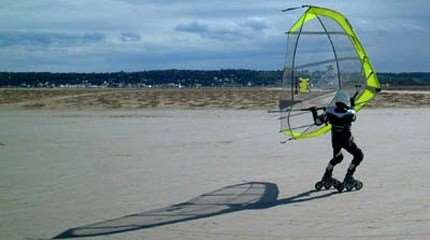
kite roller
There are several and relatively unknown practices of skating that involve traction. Among them, kite-skating or roller-joering. Warning, these practices require a good technical background …
kite-skating
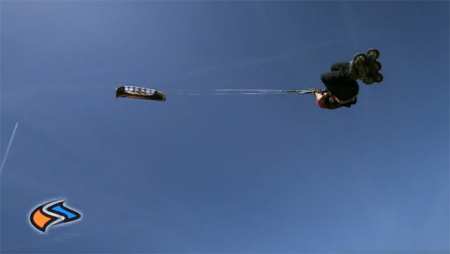 “Kite” : this term is explicit in English. It applies to both small paper kites for children as huge kites used in kite-surfing.
“Kite” : this term is explicit in English. It applies to both small paper kites for children as huge kites used in kite-surfing.
Terrestrial traction with a kite
A kiteskater use the power of the wind with a large power kite to be propelled across the land.
A power kite is available in two major forms: leading edge inflatables and foil kites (with open or closed cells). We recommend you to use a foil kite with open cells. They are best suited for terrestrial use.
You will need different sizes of kites depending on the “wind range” (the wind strength). If you use too large kite, you are “overpowered” as they say in the jargon. Thus you may not be able to control your kite. This is at your own risks!
Wind strength and kite sizes
Stronger winds call for a smaller kite to prevent overpower situations. You can use an anemometer to determine the wind strength.An experienced rider generally carries a ‘quiver’ of different sized kites appropriate for the wind speed range.
Examples of recommended kite sizes for a 75 kg skater:
- 6 m²: 20 to 35 knots
- 8 m²: 15 to 30 knots
- 10 m²: 10 to 25 knots
- 12 m²: 8 to 20 knots
- 14 m²: 6 to 20 knots
Plan a budget from €400 to €2000 for a kite adapted to terrestrial traction.
Kitewing
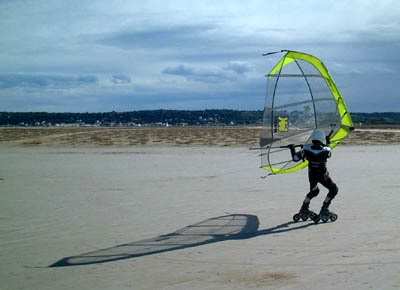 A kitewing is a wing-shaped sail designed to use wind power to provide speed and lift to riders. It can be used by skaters but you will have to train a lot to master it!
A kitewing is a wing-shaped sail designed to use wind power to provide speed and lift to riders. It can be used by skaters but you will have to train a lot to master it!
If you use classical skates, choose a good asphalt with a large surface. If you have off-road skates, prefer a beach with a firm and well packed sand.
This material is becoming more and more popular amongst skiers, snowboaders, mountainboarders, ice-skaters…
A kitewing is held directly in the hands of the user. It can be used in varied wind ranges. In the correct wind conditions an experienced skater can reach speeds up to 70 kph!
Using a kitewing with inline skates remains very confidential. This practice requires to be in an unobstructed area. On asphalt, the slightest fall can be very traumatic.
As you can imagine, you must already have a high level of freeride skating to dare using a kitewing… Do not forget to get adapted protectice gears! The best is to use a downhill equipement.
Plan a budget from €800 to €1300€ pour une aile de kitewing.
For the record …
At the 2005 “Mondial du vent” in Leucate (France), a major kitesurf event, the Swiss skater David Lenoir beat a speed record with a kitewing and off-road skates. He reached 71.5 kph on his Rollerblade Coyotes!
Kitewing and kite-skating videos
|
Session kiteroller 18-12-11 from kemon on Vimeo. |
Roller joering
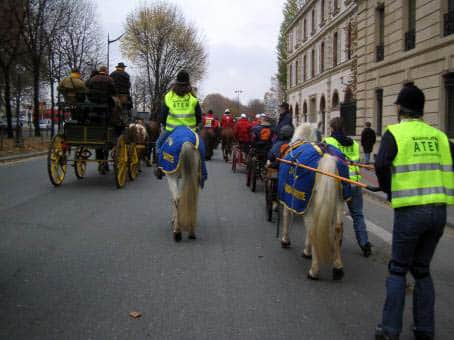 Roller-joering is an uncommon practice. The skater is towed by an animal. It can be a horse, a big dog (or la lot of dogs if you are a musher :-)).
Roller-joering is an uncommon practice. The skater is towed by an animal. It can be a horse, a big dog (or la lot of dogs if you are a musher :-)).
With a horse
Roller-joering is mostly practised by people wishing to combine their two passions: riding and skating.
The ponies are well suited to this type of exercise. Riders often use long and flexible reins and a harness to keep a distance with the animal.
With a dog (or more…)
Some skaters also practice roller-joering with one dog or even a dogs’ team! This is a rare practice. It requires a ventral harness for animals. Avoid to use a simple leash that could strangle your dog.
On the other hand, it is better not to practice too long: the asphalt may hurt the dog’s paw pads.
Last but not least: all breeds of dogs are not adapted for this practice!
Videos: Roller-joering with a dog
Are there other towed practices?
We could also include the “catch” skating in this family of practices. It consists in clinging to a vehicle. This is certainly the most dangerous practice of skating and it is forbidden by law! If you want to try a softer version, go for a bike!
What is the best equipement for terrestrial traction?
Off-road skates are perfectly design for that kind of practice. Make your choice between Rollerblade Coyote, Powerslide Vi SUV, Powerslide XC-Path or Trailskates.
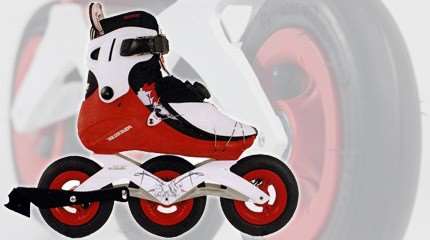 |
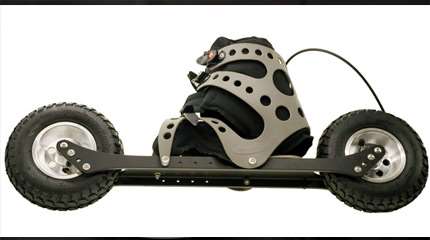 |
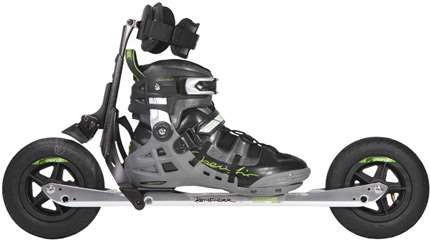 |
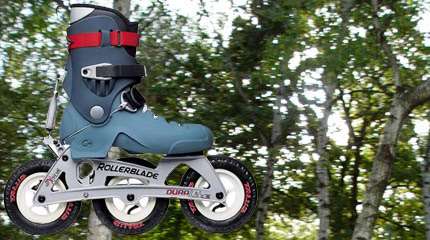 |
Links
Video : kite-skating and mountainboard session with Laurent
Kite-skating ession in Bray-Dunes (59, France)
Photos: Flysurfer, allinline.ch
rollerenligne.com
